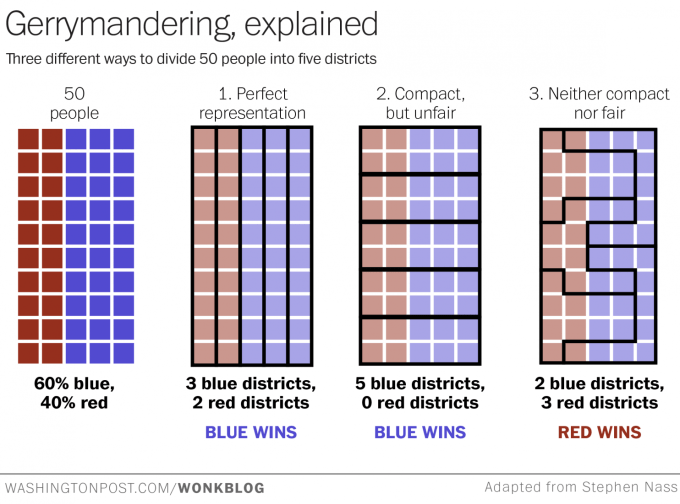- Joined
- Sep 23, 2011
- Messages
- 11,273
- Reaction score
- 5,733
- Location
- On a Gravy Train with Biscuit Wheels
- Gender
- Male
- Political Leaning
- Very Liberal
Democrats win the total House of Delegates vote in Virginia by 10 points and still come up short.
It's not just the 43 federal remaps either; it's also the 99 state chamber remaps; with the state chambers doing all 142.
I consider REDMAP 2010 by GOP architect Chris Jankowski to be the most brilliant electioneering I've seen, and I first voted in 1972.
He gave a lengthy interview to Rachel Maddow a few years ago on his model, and frankly, DEMs have copied it.
So, all hands on deck with the Holder/Obama redistricting project to oppose REDMAP 2020 ...
There's so much data collected and available that everything seems to have gotten so sophisticated. While gerrymandering has existed for a long time you can get so granular now-a-days that it's a different ball game. Republicans are typically fine with it right now because the last census happened to fall on a first mid term election year in which they won a large number of states...but the next is the Trump 2nd term election.
A lot of these states have majority Democrats so throw in 2020 census redistricting gerrymandered to the extent that Republicans gerrymandered in 2010 and you end up with near permanent Dem majorities in the state and national houses. I'm sure Republicans will be on the anti-gerrymandering wagon and like most things act like it's some new idea.

![pa].jpg pa].jpg](https://debatepolitics.com/data/attachments/106/106026-b26719bfcbc20a9d29da6e2e66f08e12.jpg)
